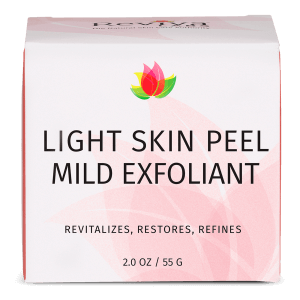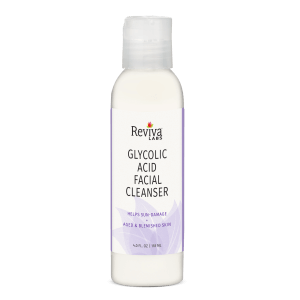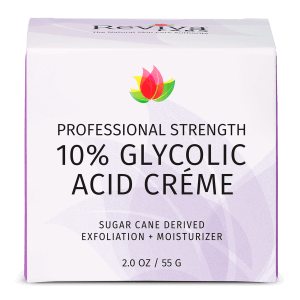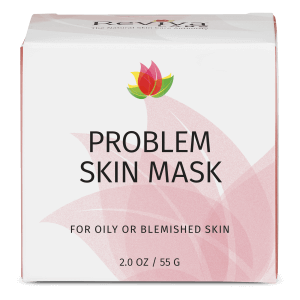Clean Beauty, Ingredients, Natural, Reviva Labs, Skin Care
Different Types of Skin Texture Explained
Your skin is more than just a protective barrier; it’s a reflection of your health and well-being. A smooth, even skin texture is often associated with youth and beauty. However, achieving this isn’t always easy. Numerous factors, ranging from genetics to lifestyle habits, can impact your skin’s texture. This article dives into the world of skin texture, exploring its various types, causes, and how to manage them effectively.
Defining Skin Type and Texture
When talking about skin, two terms often used interchangeably are ‘skin type‘ and ‘skin texture’. However, they are distinct aspects of our skin’s health and appearance.
‘Skin type’ pertains to the amount of oil or sebum your skin produces. It’s typically classified into five categories: normal, oily, dry, combination, and sensitive skin. On the other hand, ‘skin texture’ refers to how your skin’s surface feels to the touch. It ranges from being soft and supple to feeling rough and bumpy.
Unraveling the Different Types of Skin Textures
Our skin’s texture can be influenced by a range of factors, resulting in different types of textures. Here’s a closer look at the most common ones:
1. Small Congested Pores (Blackheads or Whiteheads)
Blackheads and whiteheads are a form of comedonal acne that occurs when your pores get clogged with oil, dead skin cells, and bacteria. Blackheads are open comedones, while whiteheads are closed comedones.
How to Treat It
Promoting cell turnover is the key to dealing with comedonal acne. Look out for ingredients such as retinol, azelaic acid, salicylic acid, or glycolic acid in your skincare products. These ingredients help exfoliate and slough off dead skin, clearing out your pores.
2. Visible Large Pores
Large pores are often a result of oily skin and can become more noticeable with age.
How to Treat It
While you can’t shrink your pores, you can make them less noticeable. This involves clearing out clogged pores and using pore-blurring products.
3. Breakouts and Blemishes
Breakouts differ from whiteheads and blackheads in that they’re usually inflamed and filled with pus.
How to Treat It
Salicylic acid can help tackle these deeper clogs. Stay consistent with your skincare regimen to see results.
4. Tiny, Rough-to-the-Touch Bumps (Keratosis Pilaris)
Keratosis pilaris is a form of eczema that can result in bumpy skin, most commonly found on the upper arms, cheeks, and thighs. It occurs when dead skin cells crowd hair follicles.
How to Treat It
Creams containing ingredients like alpha hydroxy acid, lactic acid, salicylic acid, or urea can help shed dead skin cells while moisturizing.
5. Flaky or Rough Patches
These are often a result of dry skin or specific skin issues which impair the skin’s ability to retain moisture.
How to Treat It
Addressing dry or rough patches involves moisturizing your skin effectively. Ingredients such as petrolatum, mineral oil, shea butter, dimethicone, glycerin, hyaluronic acid, and ceramides can be beneficial.
6. Fine Lines and Wrinkles
Fine lines and wrinkles are a natural part of aging and can result from repeated facial expressions or sun damage.
How to Treat It
You can target lines using alpha hydroxy acids, which exfoliate dead skin cells and hydrate skin.

Identifying Your Skin Texture
Identifying the changes in your skin’s texture is the first step towards managing it effectively. If you’re unsure, it’s best to consult a board-certified dermatologist who can help you develop a personalized treatment plan.
Role of Diet in Skin Texture
Your diet plays a significant role in your skin’s health. A diet high in sugar or overly processed foods can contribute to the formation of roughly textured skin. On the other hand, fresh fruits, vegetables, wild-caught fatty fish, and nuts and seeds can promote collagen production and smoothen skin texture.
Topical Applications to Improve Skin Texture
Topical application of sunscreens, moisturizers, and gentle exfoliants can help improve skin texture. Look for products containing ingredients like vitamin C, AHAs, retinol, anti-inflammatory topical ingredients, hydrating ingredients, and those supporting collagen production.
Professional Options
For stubborn skin texture issues, professional treatments like laser therapy, chemical peels, micro-needling, and microdermabrasion can be effective. Consult your dermatologist for guidance on suitable professional treatments.
Preventing Textured Skin
Prevention plays a crucial role in managing textured skin. Regular moisturizing, wearing sunscreen, soothing acne symptoms, regular exfoliation, minimizing the use of harsh skincare ingredients, and maintaining a healthy lifestyle can help prevent textured skin.
Persistence Will Reveal Improvements
While it’s unrealistic and near impossible to achieve the hyper-smooth complexion of an Instagram filter, there are steps you can take to help soften and smooth your skin texture. Remember, consistency is key when it comes to skincare.












